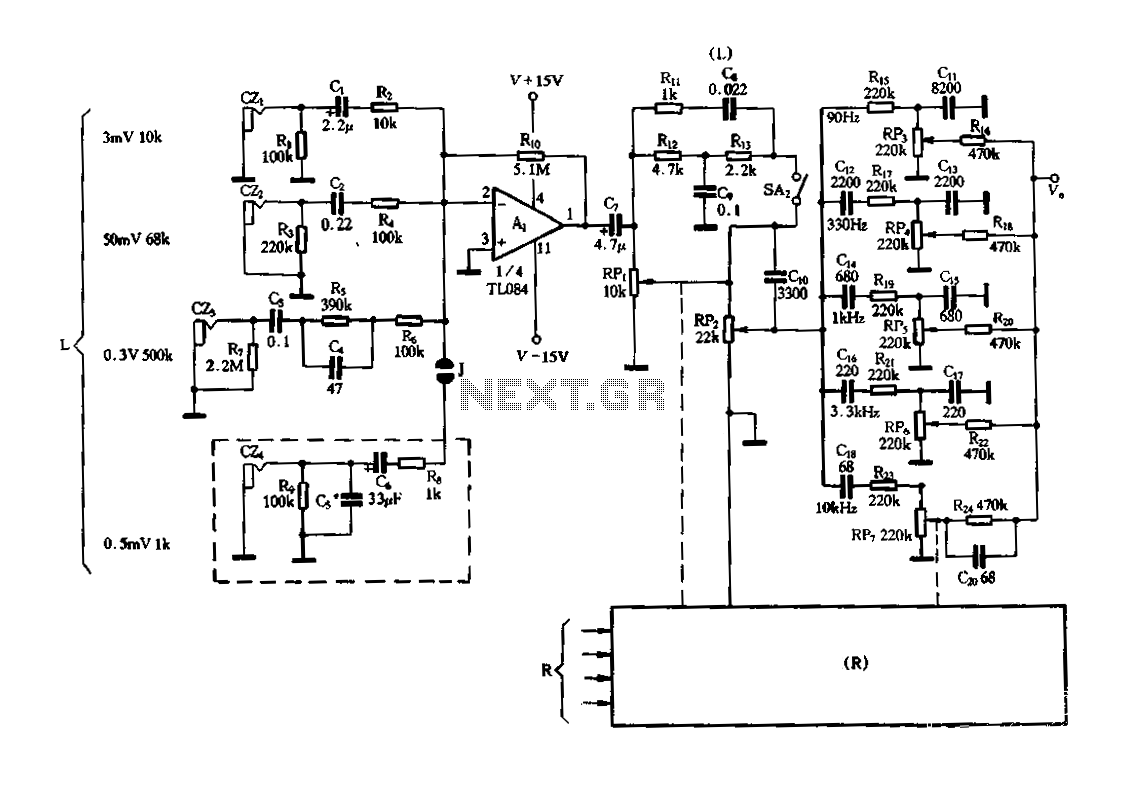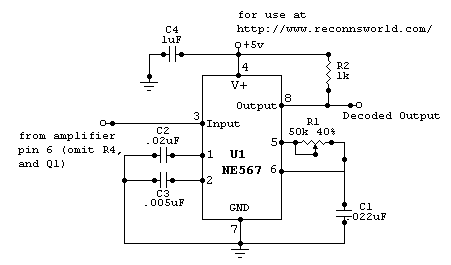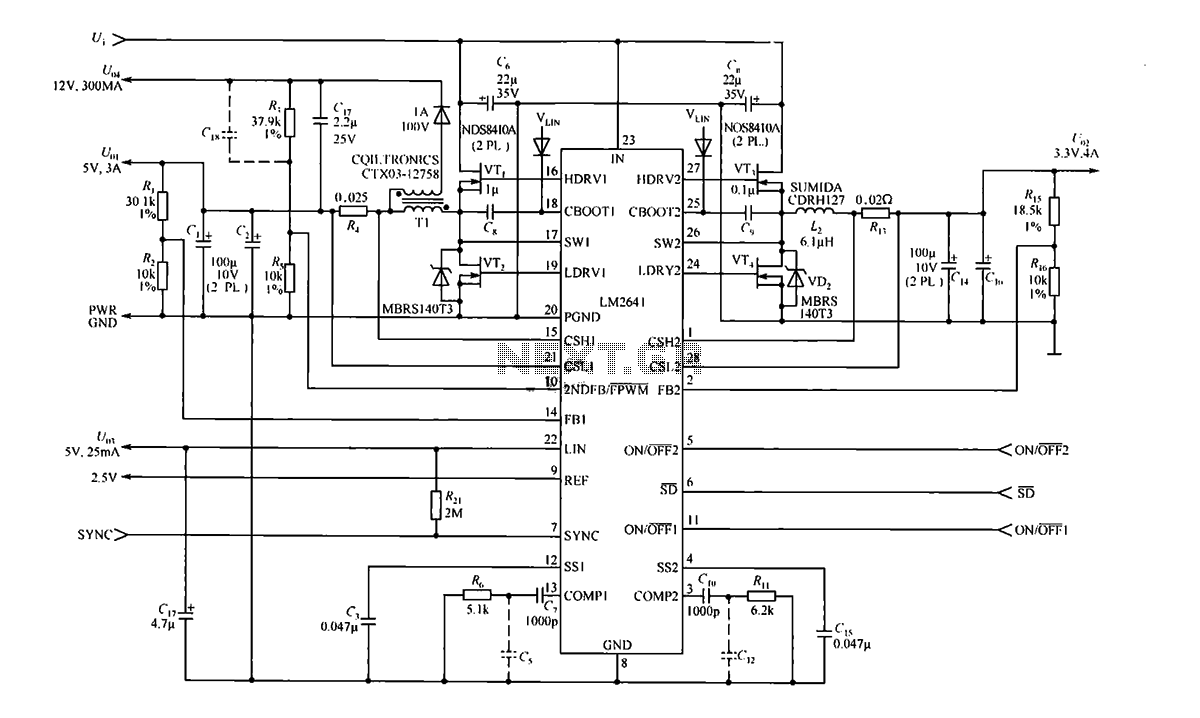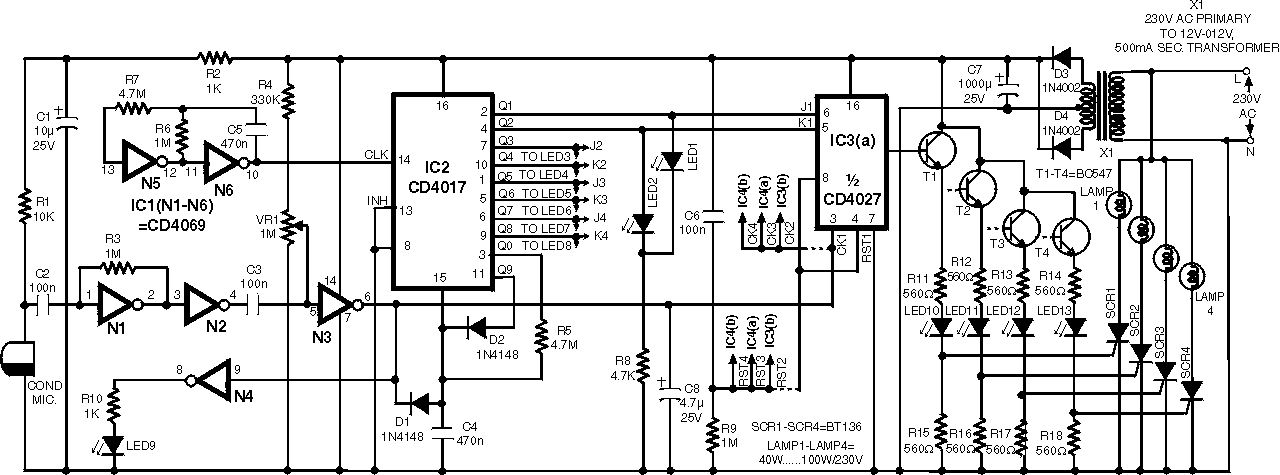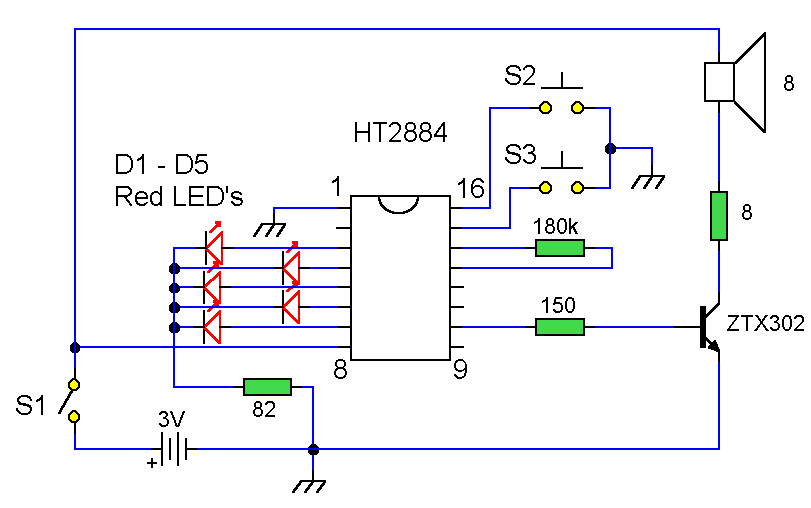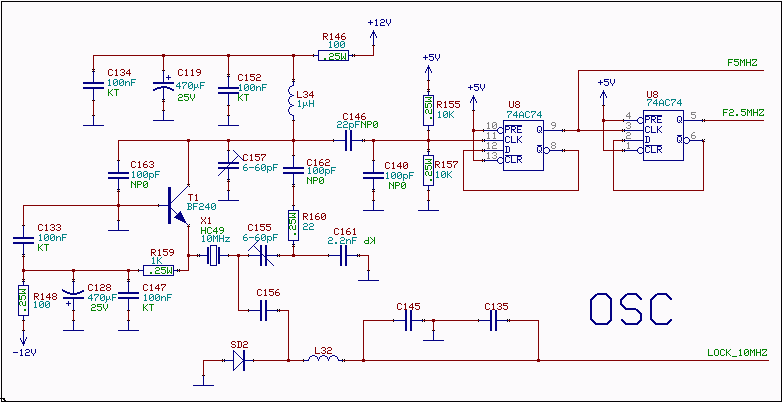
Four sirens sound with ic UM3561

The circuit operates using a UM3516 integrated circuit (IC1), which is designed to generate sound. The output sound is produced at pins 7 and 8 of IC1, and the components R1 and VR1 are utilized to control the frequency of the sound generated.
The UM3516 is a sound generator integrated circuit that can produce a variety of tones and sound effects. It is commonly used in applications such as toys, alarms, and other electronic devices that require audio output. The operation of the circuit is straightforward: the UM3516 receives power and is configured to generate sound based on the settings applied to its pins.
Pins 7 and 8 of the UM3516 are the audio output pins, where the generated sound signals are available. These pins are connected to passive components, R1 (a resistor) and VR1 (a variable resistor or potentiometer), which are crucial for adjusting the frequency of the sound. The resistor R1 sets a baseline resistance that influences the sound output, while the variable resistor VR1 allows for real-time adjustments to the resistance, enabling the user to modify the frequency of the sound produced by the circuit.
The circuit may also include additional components such as capacitors for filtering and stabilizing the output signal, ensuring that the sound produced is clear and free from unwanted noise. The overall design of the circuit allows for flexibility in sound generation, making it suitable for various applications where sound output is required.Operation of the circuit uses a UM3516 IC IC1 number ready to create a sound all four sound at pin 7, 8 of IC1 to the R1, VR1 to take to control the frequency.. 🔗 External reference
The UM3516 is a sound generator integrated circuit that can produce a variety of tones and sound effects. It is commonly used in applications such as toys, alarms, and other electronic devices that require audio output. The operation of the circuit is straightforward: the UM3516 receives power and is configured to generate sound based on the settings applied to its pins.
Pins 7 and 8 of the UM3516 are the audio output pins, where the generated sound signals are available. These pins are connected to passive components, R1 (a resistor) and VR1 (a variable resistor or potentiometer), which are crucial for adjusting the frequency of the sound. The resistor R1 sets a baseline resistance that influences the sound output, while the variable resistor VR1 allows for real-time adjustments to the resistance, enabling the user to modify the frequency of the sound produced by the circuit.
The circuit may also include additional components such as capacitors for filtering and stabilizing the output signal, ensuring that the sound produced is clear and free from unwanted noise. The overall design of the circuit allows for flexibility in sound generation, making it suitable for various applications where sound output is required.Operation of the circuit uses a UM3516 IC IC1 number ready to create a sound all four sound at pin 7, 8 of IC1 to the R1, VR1 to take to control the frequency.. 🔗 External reference
